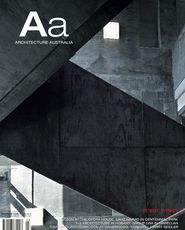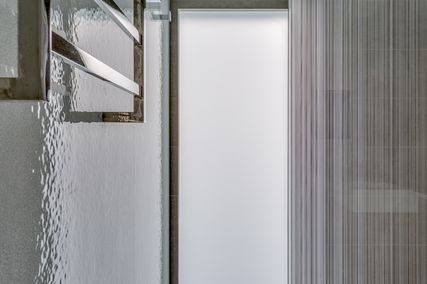DIVERSITY
One of the most compelling things about architecture is the many diverse ways one can engage with it as both a discipline and a profession. This is one of the more interesting aspects of a magazine like Architecture Australia – as the journal of the RAIA it has a very wide architectural audience (not to mention the lay readers). The readership ranges from students to retired practitioners, from academics to those administering contracts, from small boutique design practices to multinational corporate firms, from those working at the nitty gritty end of low-cost socially engaged projects to those exploring the brave new worlds of digital technology. These various fields are not mutually exclusive; nonetheless it is always a challenge to engage with such complexity in the format of a single magazine. But that is also what makes it interesting, and some fantastic serendipitous juxtapositions can occur where exciting connections arise between seemingly disparate works.
Likewise, the great strength of the recent RAIA conference, The Future is Now!, was the way it engaged with the incredible diversity of architectural production. The audience was treated to strong presentations by a broad range of speakers. Wolf D. Prix gave a very fine impression of the architect-as-rock-star – sunglasses in a darkened auditorium, loud music, rampant egotism, he knowingly fulfilled every possible cliché associated with the type. We don’t often get to see such a performance here at the edge of the world. Anupama Kundoo was informal and very enthusiastic as she talked us through her “risky” work in rural India, which explores the innovative use of local technologies in impoverished circumstances. This included making buildings out of mud brick and literally “cooking” it to produce a fired brick building. Carme Pinos showed a breathtaking array of buildings as she ranged across the stage, gesticulating passionately.
Andrew Freear was equally active and seductive as he remembered Samuel Mockbee and spoke of the more recent work of Rural Studio in Alabama’s poorer areas, a talk which emphasized process rather than product. Kerstin Thompson elegantly framed her work through a series of themes, which allowed her to demonstrate how architecture might work to extend its territory – something she believes the profession needs to do to avoid becoming irrelevant. And so on.
Tim Hill’s agitated account of the messiness of everyday practice, Evelien van Veen’s studied descriptions, Elke Delugan-Meissl’s smooth forms, John Wardle’s rapidly developing oeuvre, Kerry Hill’s careful discussion of ideas of local and international – each presentation was a fascinating performance which gave insights into diverse bodies of work and ways of approaching architecture.
But there was almost no discussion. What would Anupama Kundoo or Andrew Freear make of the more extravagant work of some of their colleagues?
Would it be possible to get Wolf Prix to engage with their work in impoverished locations? Or with anything else? What differences and similarities might there be between speakers working with similar ideas but in different cultural contexts?
What might the tensions and connections between vastly different approaches mean for architecture’s futures? And what did the audience make of all this?
We don’t know. There was no opportunity for such interaction. There was no discussion after the speakers and the audience was not invited to respond.
Each day closed with a panel session of the speakers but, despite the best efforts of the session chairs, these fell flat. Perhaps everyone was simply too tired at the end of the day. But nor was the event as a whole framed to encourage debate or interaction. Of course there was lots of private discussion in bars and restaurants, but surely the architectural community would have benefited had some of this been public. At its best, lively, spontaneous discussion can result in ideas being rethought and re-examined in unexpected ways.
Diversity is one of the best things about architecture, but the ability to talk to each other across these differences, to explore both the frictions and the familiar, should also be prized. JUSTINE CLARK















